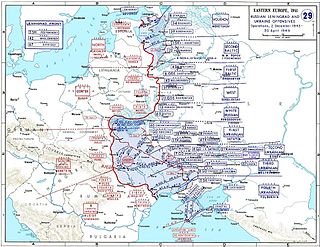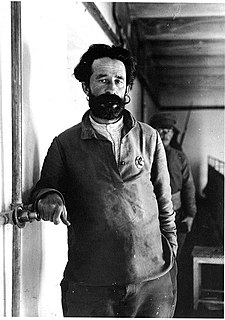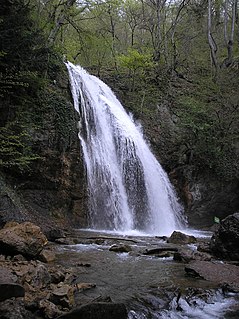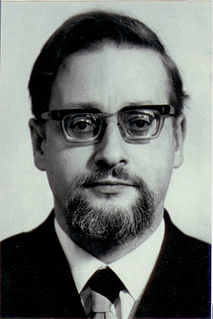
Paul Ludwig Ewald von Kleist was a German field marshal during World War II. An early pioneer of "blitzkrieg" warfare, Kleist was the commander of Panzer Group Kleist, the first operational formation of several Panzer corps in the Wehrmacht during the Battle of France, the Battle of Belgium, the Invasion of Yugoslavia and Operation Barbarossa, the invasion of the Soviet Union.

The Battle of the Kamenets-Podolsky pocket was part of the larger Soviet Proskurov–Chernovitsy Offensive, whose main goal was to envelop the Wehrmacht's 1st Panzer Army of Army Group South. The envelopment occurred in late March 1944 on the Eastern Front during the Dnieper-Carpathian Offensive. It was the biggest and most important operation of the Dnieper-Carpathian Offensive.

The Petsamo–Kirkenes Offensive was a major military offensive during World War II, mounted by the Red Army against the Wehrmacht in 1944 in northern Finland and Norway. The offensive defeated the Wehrmacht's forces in the Arctic, driving them back into Norway, and was called the "Tenth Shock" by Stalin. It later expelled German forces from the northern part of Norway and seized the nickel mines of Pechenga/Petsamo.

The Battle of the Dnieper was a military campaign that took place in 1943 on the Eastern Front of World War II. It was one of the largest operations in World War II, involving almost 4,000,000 troops at a time stretched on a 1,400 kilometres (870 mi) long front. During its four-month duration, the eastern bank of the Dnieper was recovered from German forces by five of the Red Army's fronts, which conducted several assault river crossings to establish several lodgements on the western bank. Subsequently, Kiev was liberated in the Battle of Kiev.
The 18th Guards Motor Rifle Division was formed originally as 133rd Rifle Division at Novosibirsk or Biysk in 1939. The division was part of 1st Shock Army on 1 December 1941 during the Battle of Moscow. It was redesignated as the 18th Guards Rifle Division in March 1942 with the 51, 53, 58 Guards Rifle Regiments and 52 Guards Artillery Regiment. The division fought in the East Prussian Offensive. The unit became 30th Guards Mechanised Division in 1945 as part of the 11th Guards Army. In 1965 it was renumbered as 18th Guards MRD. It seems to have been stationed in the Kaliningrad enclave with 11th Guards Army before entering Czechoslovakia in 1968, joining the Central Group of Forces.

The Budapest Offensive was the general attack by Soviet and Romanian armies against Nazi Germany and their Axis allies from Hungary. The offensive lasted from 29 October 1944 until the fall of Budapest on 13 February 1945. This was one of the most difficult and complicated offensives that the Soviet Army carried on in Central Europe. It resulted in a decisive victory for the USSR, as it disabled the last European political ally of Nazi Germany and greatly sped up the ending of World War II in Europe.

The Dnieper–Carpathian Offensive, also known in Soviet historical sources as the liberation of right-bank Ukraine, was a strategic offensive executed by the Soviet 1st, 2nd, 3rd, and 4th Ukrainian Fronts, along with the 2nd Belorussian Front, against the German Army Group South and Army Group A, and fought from 24 December 1943 – 17 April 1944. The battles on the right-bank Ukraine and in the Crimea were the most important event of the 1944 winter-spring campaign on the Eastern Front.

The 39th Guards Motor Rifle Division of the Soviet Ground Forces was a mechanised infantry division active from 1965 to 1992. It was originally formed as the 39th Guards Rifle Division of the Workers and Peasant's Red Army. It was formed during the German-Soviet War as part of the 62nd Army and assigned to the defense of Stalingrad, officially arriving in the theater in August 1942. In September the division fought through German forces which were attempting to encircle the city, and was assigned to defend the 'Volga Corridor,' the last supply line remaining for Soviet units in the city.
The Uman–Botoşani Offensive or Uman-Botoshany Offensive was a part of the Dnieper–Carpathian Offensive, carried out by the Red Army in the western Ukrainian Soviet Socialist Republic against the German 8th Army of Army Group South during World War II. Led by Marshal of the Soviet Union Ivan Konev, it became one of the most successful Red Army operations of the whole war. In over a month of combat through the deep spring mud and numerous water barriers, the 2nd Ukrainian Front advanced over 300 kilometres (190 mi), cleared German forces from southwestern Ukraine, and entered Romania and Moldova.

The Zhytomyr–Berdychiv Offensive operation was a part of the strategic offensive of the Red Army in the right-bank (western) Ukrainian SSR, the Dnieper–Carpathian Offensive. The offensive operation was conducted by the forces of the 1st Ukrainian Front commanded by General of Army Nikolai Vatutin during World War II, from 24 December through to 14 January 1944.

Wrangel's Fleet was the last remnant of the Black Sea Fleet of the Imperial Russian Navy and existed from 1920 until 1924. This squadron was a "White" unit during the Russian Civil War. It was known also as the Russian Squadron.

Filipp Kuzmich Mironov (1872–1921) was a Bolshevik revolutionary leader during and after the Russian Revolution. He actively supported the idea of democracy in the form of the Soviet Republic, was one of the first commanders in the Red Army. Loyal to the Revolution, he was condemned to death at a show-trial organized by Trotsky. He was pardoned on the eve of this execution, but later re-arrested and shot.
The 1st Guards Zvenigorod-Bucharest Red Banner Order of Suvorov Airborne Division was a division of the Soviet Airborne Troops. The division was first formed in December 1942 and fought in the Battle of the Dnieper, the Battle of the Korsun–Cherkassy Pocket, the Uman–Botoșani Offensive, the Jassy–Kishinev Offensive, the Battle of Debrecen, the Siege of Budapest and the Prague Offensive. In August 1945 it was sent east and fought in the Soviet invasion of Manchuria. The division became the 124th Guards Rifle Division in November 1945 and disbanded in 1956.

Djur-djur — waterfall is located on the Ulu-Uzen' river in the Crimean Mountains of Crimea. Waterfall height is 16 metres (52 ft). Djur-djur has not dried up ever, even in the dry years. Water from the waterfall falls into a small lake, and then cames into the river channel, which flows into the sea near the village Solnechnogorsk.

Yuri Andreevich Yappa was a Soviet and Russian theoretical physicist. He is known for publications on particle physics, quantum field theory, General Relativity, philosophy of science, and for his graduate texts on classical electrodynamics and theory of spinors.
The Lopukhin family was a noble family of the Russian Empire, forming one of the branches of the Sorokoumova-Glebov family. Eudoxia Lopukhina married Peter the Great. When Pyotr Lopukhin's son died childless, the family's princely title passed to Nikolai Petrovich Demidov-Lopukhin. The present Prince Lopukhin-Demidov is Nikolai Alexander Paul Demidoff born in 1976.
Grigory Davidovich Khakhanyan was a Georgian-born ethnic Armenian Soviet komkor. He fought in the Imperial Russian Army in World War I before going over to the Bolsheviks during the subsequent civil war. During the Great Purge, he was arrested on February 1, 1938 and executed the following year.
The Kirovograd Offensive was an offensive by the Red Army's 2nd Ukrainian Front against the German 8th Army in the area of Kirovograd in central Ukraine between 5 and 16 January 1944. It took place on the Eastern Front of World War II and was part of the wider Dnieper–Carpathian Offensive, a Soviet attack against Army Group South that aimed to retake the rest of Ukraine that fell to Germany in 1941.
Mark Mendelevich Persits was a Soviet propagandist of atheism and a scientific worker in the study of problems of religion and atheism, Writer, historian of social thought.
Anatoly Vasilievich Belov — Soviet religion scholar and propagandist of atheism. He was a First Deputy Chairman of the Council for Religious Affairs under the Council of Ministers of the USSR, an expert on Adventism and one of the authors of the Atheistic Dictionary and Atheist Handbook.










